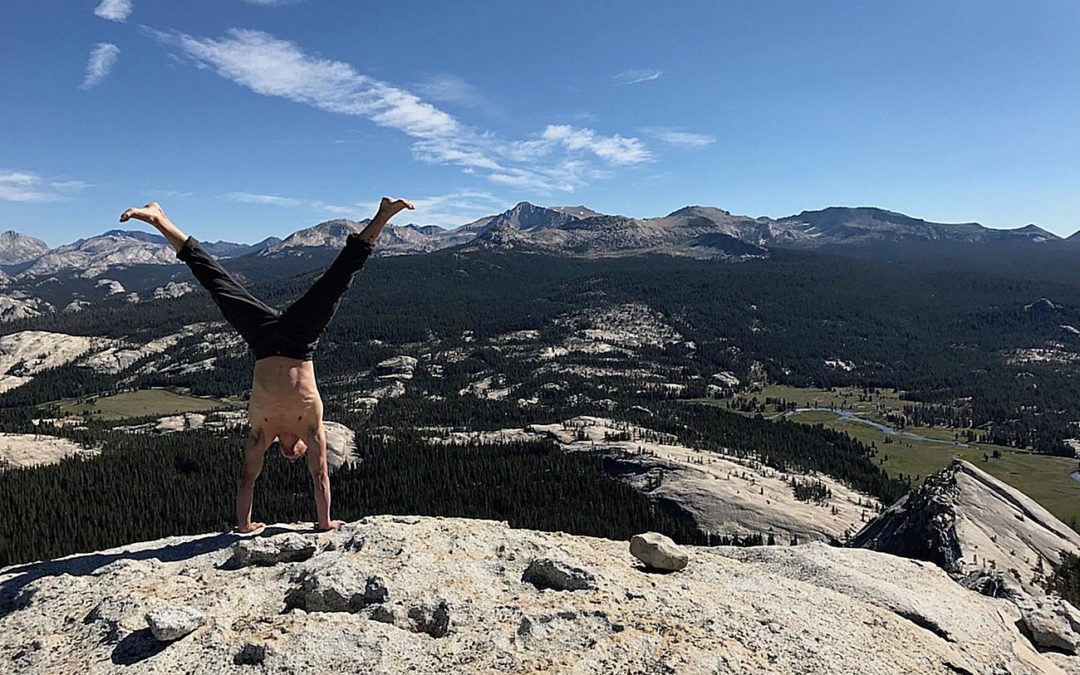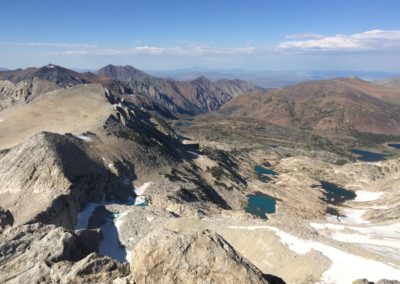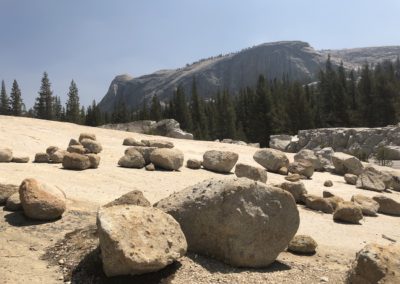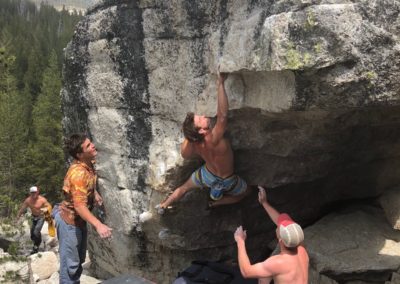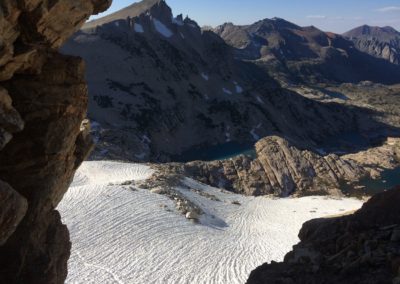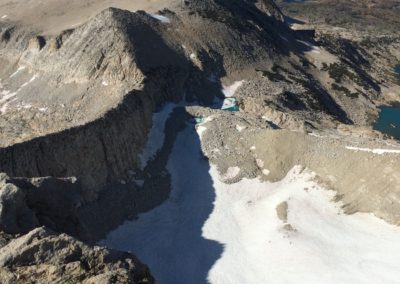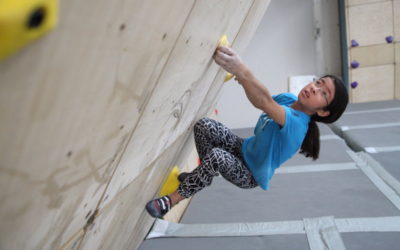Tuolomne Meadows in Yosemite is an ideal location for all things climbing. These tips will help you have a successful trip there (and anywhere else, really).
By Connell Ford
A place under the California sun and peace of mind, the alpine dome-laden high country of Tuolumne meadows in Yosemite offers paradisal refuge for the summer free climber. The High Sierra beauty fills more than the eyes with the geologic cacophony of granite, meandering streams, pine scented air, and numerous lakes reflecting the blue bird skies and puffy cumulus clouds.
John Muir has said that the landscape displays “nature’s best masonry and sermons in stone.”
As a climber I feel ever grateful to experience and temporally live in the moment on these batholiths, which have taken millions of years to arise from underground. Car-to-car alpine, short-to-long-approach multi-pitching, nails hard sport and trad, and talus to glacial erratic bouldering, the park lends itself to a diverse range of climbing opportunities. The rock will teach you how to negotiate glaciated slab, find the path of least resistance up a sea of feldspar knobs, and keep a relatively cool head while doing so.
The Tuolumne ethos is characterized by respectable tradition climbing standards and good, old-school stout ratings. As many of the climbs were done “ground up” in the 70s and 80s, meaning the lead climber found stances to hand drill in bolts while ascending, many sections of rock are therefore run-out between points of protection. Be prepared to get bold out there; prudent and technical, granite keen-eyed-wherewithal—not physical gym-trained strength—will grant safe passage on these routes.
After moving up from San Diego to Reno, the year marks my first true season in Tuolumne Meadows. One can drive from Reno to the gate of the park in less than 3 hours.
Instead of my usual demeanor to only attempt the most difficult graded YDS routes I can climb, I vowed to earn more technical granite grace and build my repertoire with a certain amount of mileage to increase my comfort over potential future run-outs and overall efficiency with multi-pitching.
Also, I wanted to familiarize myself with the classics and all the offerings of the park regardless of grade or style: sport, alpine, trad single or multi pitch, or bouldering. In the critical analysis of climbing, for me the sport, or better said, art, revolves around the adaptive movement of the body over stone and transformation of consciousness, irrespective to discipline or grade. To learn, thereby grow, and become a better person is the goal; that is the truth.
I write this post to share seven lively lessons learned from the past weekend’s climbing in and around the park. They are experiences that became apparent to me on this trip or reinforced prior knowledge. They may aid you in your future pursuits or offer nothing more than a vision of arbitrary font organized on a screen.
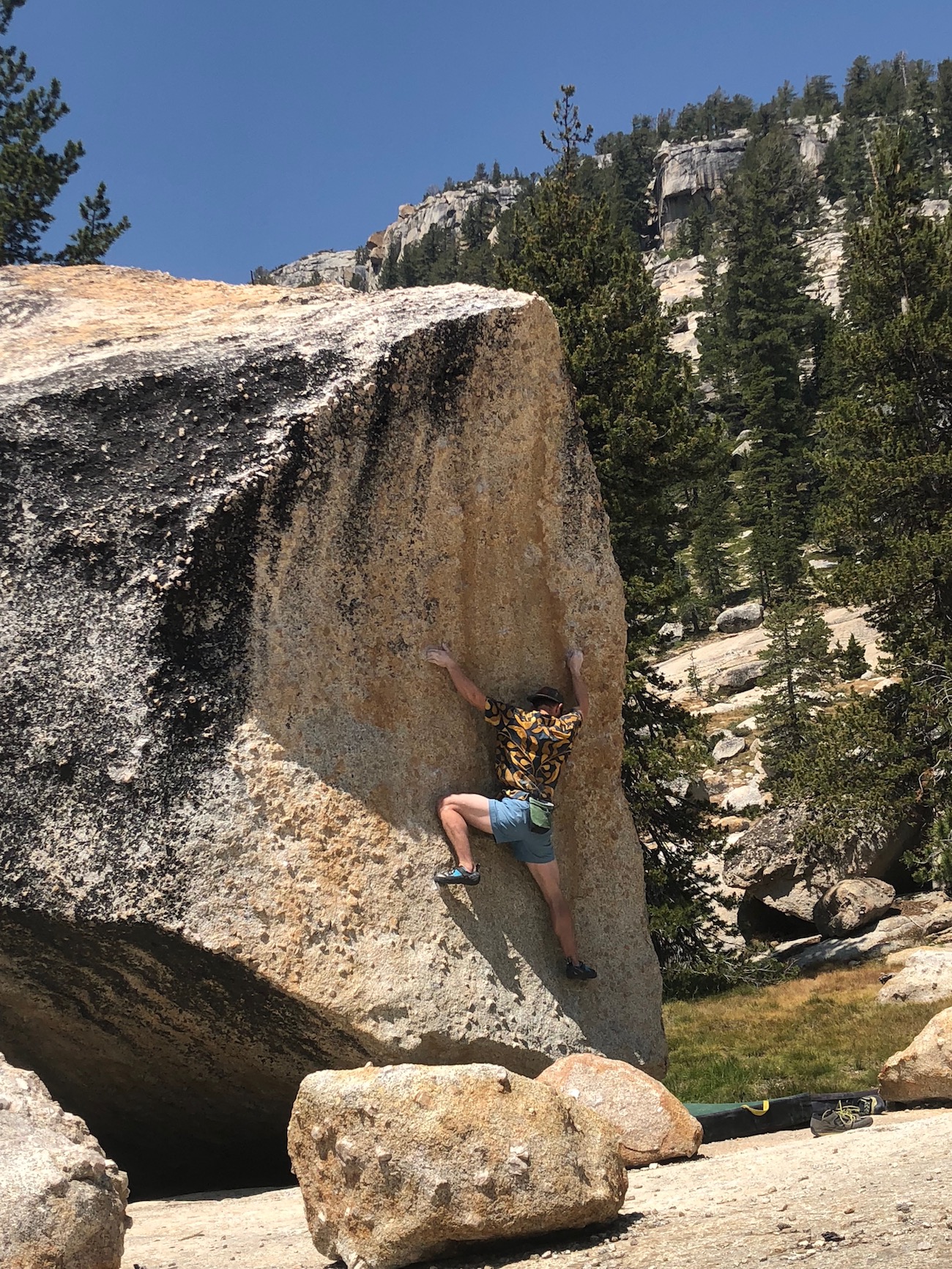
-
- Proper snacking with use of bag stowed on harness gear loop. It has become norm for me on multi-pitches to carry a Black Diamond Solution harness bag filled with a variety of bars, energy gels, and or one fruit cup. The snack bag is redundantly clipped to my back left gear loop with a lightweight OZ carabiner. The amount of food will depend on length of climb, but as a general rule I ration one bar per hour of activity. The bag can be used for small miscellaneous items and beats carrying a backpack.
- Carry a water bottle stowed on harness gear loop for multi-pitching. In the past I used a small Nalgene bottle, which I found too heavy and cumbersome. Nowadays, I rinse out a 20 fluid ounce Vitamin Water plastic bottle, clove hitch the head of the bottle with a thin accessory cord, and stow it on the back right side of my harness’ gear loop with a Black Diamond OZ carabiner.
- Wear sunscreen but avoid forehead application. Before embarking on your climb, go through your gear checklist: shoes, harness, chalk bag, and don’t forget about sunscreen. It’s especially important for high altitude and summer solstice climbing when the earth is maximally hit with the sun’s rays. That said, beware that the design of the Black Diamond Vapor helmet poorly ventilates the frontal portion of the head often producing soaked hair from excessive sweat accumulation. Teary, stinging, and irritated eyes and limited visibility will result if you slather that sunscreen on. The last thing you want is to be visually impaired while halfway up Mt. Conness.
- Bring a digital topographic map to use as a resource on route. Due to the exfoliating nature of alpine rock it’s difficult to distinguish key features of the route. Having a picture overlay is helpful to navigate to belays and to stay on route. It brings comfort knowing where you’re going and when the pitch will be over in relation to having enough gear.
- Do proper research for approach. In today’s technological age, we have so many resources like Mountain Project, a host of guidebooks, and mapping systems to help prepare for our climbs. For example, you can virtually climb the Nose in Google Maps Street view. Google maps satellite view accompanied by the interchangeable 2d and 3d modifications will greatly increase your chances of success for a timely approaching of your climb. A 3-hour approach can easily double in time if you find yourself lost, have to constantly backtrack, and stop and double check guidebooks.
- Strategize your day around the shade. The temperature and rock heat up faster than one would think. Don’t get caught in the sun when temperatures exceed 70 degrees with minimal wind. I’ve woken up early in the morning to beat the forecasted 70-degree temps only to find myself melting in wind sheltered east-facing infernos sport climbing behind Pywiack dome or at the Phobos/Diemos cliff. Crags that get morning shade, for example, include Medlicott dome and east cottage dome. Lamb Dome, Fairview, Drug, and select routes on Lembert Dome all get morning shade as well.
- The early bird gets the worm. By getting up by 4AM, once you finish with morning routines, you’ll be at the base by first light, enabling you and your partner to be first on route and minimize chances of being caught in an afternoon thunderstorm.
I also don’t ever like being behind parties due to lack of patience and safety concerns. I’ve seen pulled blocks to dropped carabiners, helmets and camelots. Avoid following a train of parties on route by having a backup route to climb.
A note about weather: If you see cumulus clouds forming before 10AM, there’s a likelihood of afternoon thunderstorms. Many of the formations are lightning rods and it would be more than an adventure to get off any low angle Tuolumne dome frictions descent in the pouring rain.

